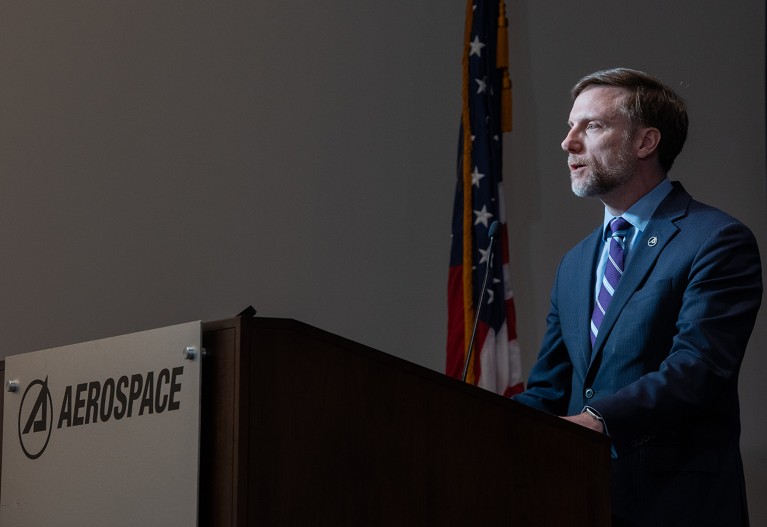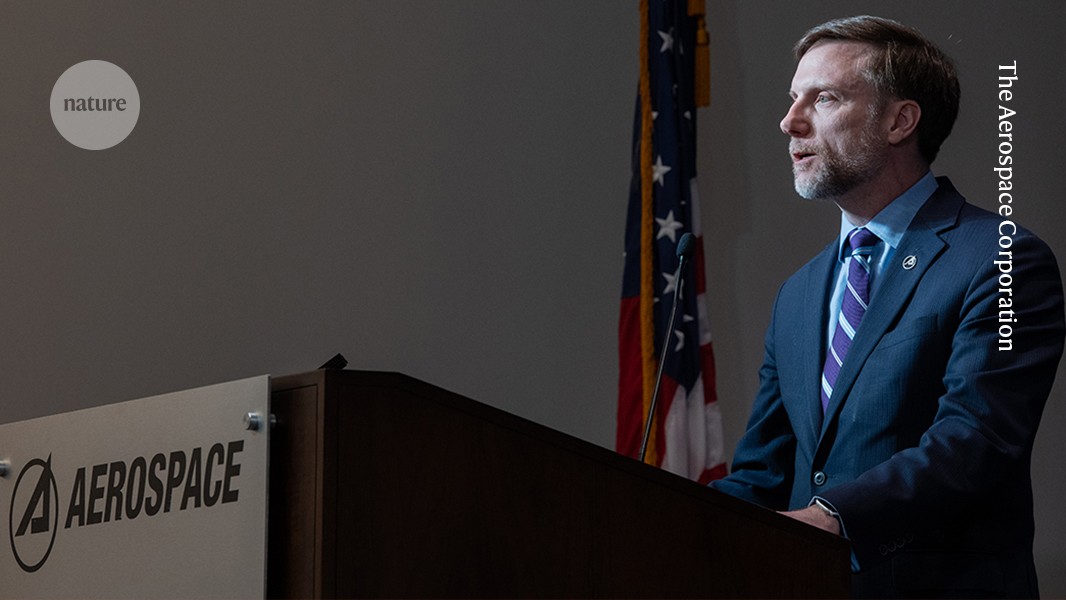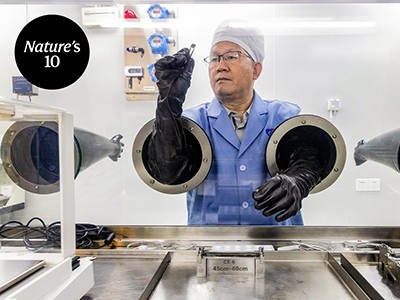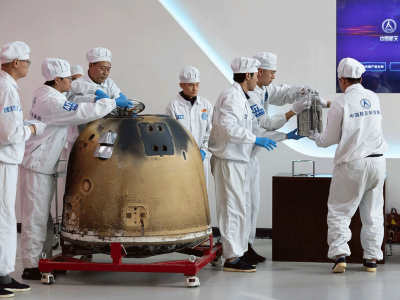
Jamie Morin discusses the importance of collaboration at a time of increasing space capabilities at the Space Partnerships and Competition in the Pacific event in March.Credit: The Aerospace Corporation
In April, the World Economic Forum and UK consultancy firm McKinsey suggested that lower costs and better technologies could see the global space economy swell to a US$1.8-trillion industry in 2035, from $630 billion in 2023.
However, this rapid expansion, achieved in part through increased involvement of the private sector, led by Elon Musk’s company SpaceX, brings obstacles — especially in the realms of sustainability, security and governance.
In October, 11,200 delegates gathered at the 75th International Astronautical Congress in Milan, Italy, to discuss these challenges. Among the panellists was Jamie Morin, who runs the Center for Space Policy and Strategy (CSPS). Based in Chantilly, Virginia, CSPS is part of Aerospace, a non-profit advisory body to the US government. Nature spoke to Morin about the opportunities and challenges facing the space sector over the next five years.
How will the commercial space sector contribute to overall economic growth?
The space sector contributes powerful economic activities that aren’t measured well: from a manufacturing perspective, its economic output isn’t all that large, but its impacts extend far. For instance, GPS, a free service provided by the US government and US Space Force, is the foundation of a lot of economic activity. Every ride-sharing and delivery app depends on GPS services, but those firms’ revenues don’t end up being attributed to the space sector or measured as part of the space economy.
Li Chunlai: Moon-rock guardian
Another consideration is weather forecasting. A huge swathe of the data used for meteorological and long-term climate models are collected with space-based sensors. By and large, these are provided for free by governments and used by both private forecasters and government agencies to produce weather information. So, these unpriced data contribute to human welfare — that’s really the core story for many of the space sector’s contributions to the world economy.
How do you see the next five years in the space industry?
There are rising concerns among governments, scientists and private companies about the sustainability of the low Earth orbit environment — altitudes of up to 2,000 kilometres above the planet — due to a rapid growth in the number of launches and populations of satellites. We’ve seen an order-of-magnitude increase in active satellites in the past decade, from about 1,000 to more than 10,000 satellites in all-Earth orbit, because it has become much cheaper for private companies to take part in space missions.
This growth is a concern because satellites in low Earth orbit move at velocities of around 7.5 kilometres per second and further collisions could markedly worsen an operating environment that already has many thousands of untracked items of debris from previous break-ups and collisions.

Morin says coherent leadership and vision are needed to help to ensure the long-term success and benefits of the space industry.Credit: The Aerospace Corporation
However, there are also enormous opportunities for the application of space technology in solving sustainability problems on Earth — such issues are probably higher on the agenda for most people. With this in mind, my colleagues and I want to help governments to make smart decisions in space to maximize the long-term contributions to humanity’s welfare. We expect to see a considerable rise in the number of firms interested in space over the next five years — from the usual actors in the United States, China and Europe and, increasingly, from new players around the world. This rising interest is a key issue that governments must work through, and they need to do so by collaborating better with the private sector, because companies are pioneering many of the techniques used to manage large constellations of satellites.
The next five years will be a crucial time for this issue, because the world will see many more companies and countries operating at a large scale — having fleets of hundreds or thousands of satellites — than there are now. It must be addressed in the next few years or else there is a large risk that this uncoordinated activity could become dangerous. By relying on distinct sources for insights into the orbital environment and by controlling their spacecraft independently, satellite operators could make manoeuvre decisions for their satellites that increase rather than reduce the risk of collision.
What regulatory reforms are needed to enable the space industry to grow while maintaining safety and security?
An accord, called the Outer Space Treaty, currently governs international behaviour in space. It states that individual countries bear the responsibility for national activities in outer space — both by governmental and non-governmental entities. Each government must make its own decisions about how to regulate these activities.
One of the crucial priorities is working out how to coordinate space-faring nations effectively, so that different satellites do not obstruct each other, either physically or through electromagnetic-spectrum interference. This is a huge issue that’s being worked on right now through an active data-sharing collaboration between the United States and the European Union. Many satellite operators will be subscribed to both US and EU systems, so it is crucial that there is sustained coordination between these two tracking and collision-prediction enterprises.
First rocks returned from Moon’s far side reveal ancient volcanic activity
In October, CSPS published the Space Agenda 2025, a compendium that highlights 16 questions facing Donald Trump’s incoming US presidential administration. It touches on how to maximize the value of space for humanity, managing geopolitical competition in space and sustainability.
One challenging issue that Trump might face concerns reports that Russia could be seeking to place a nuclear weapon in space. This would be a violation of the 1967 Outer Space Treaty, which the Soviet Union ratified at the time. Such a weapon would pose an indiscriminate threat to all satellites, regardless of who operates them, and would be against the interests of all space-faring nations. The implications of the use of such a weapon in the orbital environment would be serious and long-lasting. Most satellites, especially civilian ones operating in low Earth orbit, are not reinforced to withstand nuclear damage.
The space sector is extraordinarily complicated right now: it’s democratizing with new players, crowded with lots of continuing activity and subject to conflict. All of these issues make managing it a difficult task, and it requires coherent vision and leadership to succeed.
This interview has been edited for length and clarity.
This article is part of Nature Spotlight: Space research, an editorially independent supplement. Advertisers have no influence over the content.




